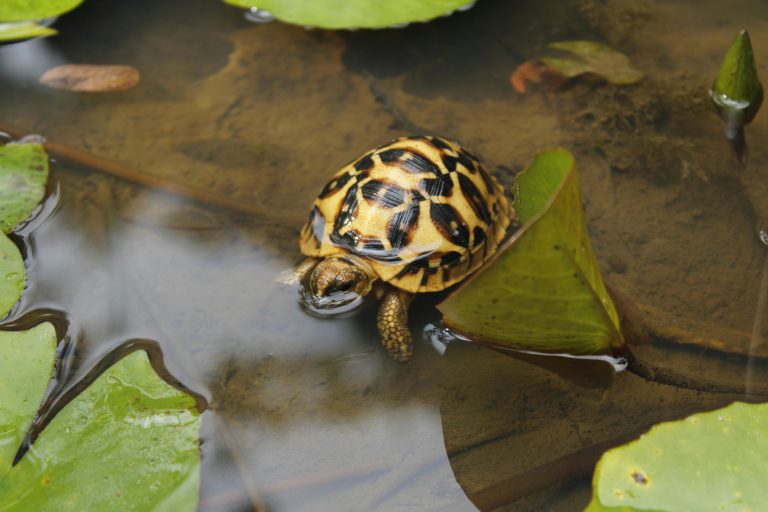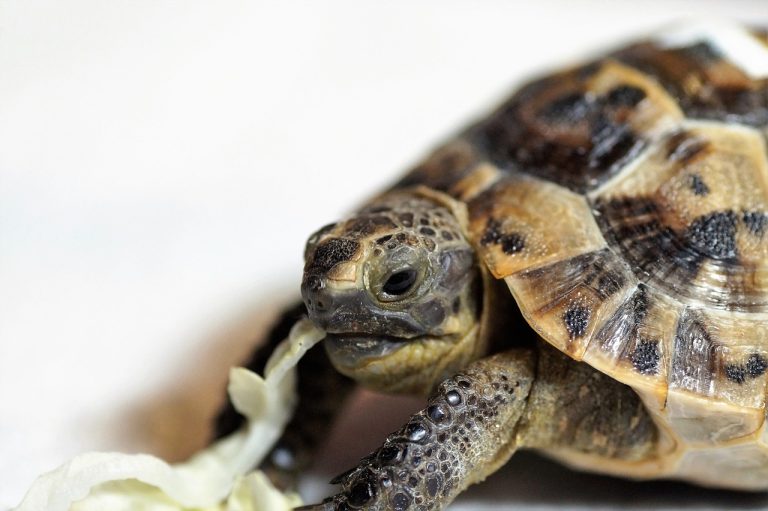How To Transport A Turtle On An Airplane Safely?
Do you have a profound love for turtles and a desire to explore the world? Have you ever thought about the steps you need to take to ensure your beloved shelled companion enjoys a smooth journey? Get ready to embark on a new learning adventure!
When it comes to safely transporting a turtle on an airplane, there are several rules, factors, and precautions to consider. From your turtle’s well-being and safety to complying with airline policies and federal regulations, every detail matters.
We’ll cover all the essentials so you can confidently send your turtle on its grand adventure. Whether you’re traveling across the country or across the globe, this guide will provide you with the necessary knowledge to ensure a fantastic and secure journey for your turtle.
If you’re curious about the paperwork required and how to prepare your turtle for air travel, you’ve come to the right place. Join us as we debunk common myths about turtle flights and discover how to give your turtle an unforgettable experience.
Key Takeaways:
- Before your trip, have your turtle examined by a veterinarian to ensure it’s in good health and to address any potential health concerns.
- Select a transportation container with adequate ventilation and safety features, and provide comfortable bedding to cushion the journey.
- Maintain the travel container at the appropriate temperature, ensure sufficient ventilation, and provide adequate lighting to support your turtle’s health.
- Help reduce your turtle’s stress by acclimating it to the carrier beforehand. Secure the carrier properly and inform airline staff that you’re traveling with a pet turtle.
- Ensure your turtle has access to food and water before the flight, provide ample water, and use absorbent materials to manage waste.
- Familiarize yourself with the airline’s regulations, which can vary significantly depending on the airline, required documentation, and other factors.

What Are The Health And Safety Considerations?
Ensuring the health and safety of your turtle should be your top priority when traveling with them.
To ensure that your beloved shelled companion travels comfortably and safely, there are several important considerations to keep in mind.
- Pre-Trip Health Check:
Arrange for your turtle to undergo a comprehensive medical evaluation by a licensed veterinarian before embarking on your journey. This check-up is essential to confirm that your turtle is healthy enough to travel and to identify any underlying conditions that could worsen during the trip. Conducting this health assessment well in advance allows time for any necessary treatments or adjustments to their care plan. - Preparation of the Travel Container:
Selecting the appropriate travel bag or carrier is crucial. It should be tailored to the size and species of your turtle while providing enough space for comfortable movement. Choose a sturdy carrier with sufficient safety features and airflow. Adding soft bedding to line the container helps cushion any movements during transport, enhancing safety. Ensure the carrier is securely fastened to prevent any shifting or tipping that could endanger your turtle. By taking these precautions, your pet will travel in a secure and comfortable environment. - Lighting, Ventilation, and Temperature:
Maintaining appropriate levels of lighting, ventilation, and temperature is essential. Turtles are ectothermic, meaning they rely on their environment to regulate their body temperature. It’s crucial to maintain your turtle’s species-specific temperature range in the travel container or carrier. Providing a temperature gradient within the carrier allows your turtle to move to warmer or cooler areas as needed. Adequate airflow must be ensured to provide a constant supply of fresh air. Additionally, sufficient illumination, including UVB lighting either artificially or naturally, is necessary to support vitamin D production and overall physical well-being. By carefully monitoring and maintaining these settings, you can significantly reduce stress and improve your turtle’s overall well-being during travel.
How To Handle And Transport Your Turtle Safely?
Here are some practical tips and instructions to ensure a safe and comfortable journey for both you and your turtle companion. By following these suggestions, you can reduce stress and improve your turtle’s well-being during travel.
- Familiarize Your Turtle with the Carrier:
Introduce your turtle to the carrier or travel box well in advance of the journey. Gradually acclimating them to the new environment will help them feel more comfortable and less anxious during travel. - Provide Comfort Inside the Carrier:
Place soft bedding or familiar items inside the carrier to create a sense of security and comfort for your turtle. Increasing the amount of time they spend in the carrier gradually will help them adjust and reduce fear. - Secure the Turtle and Carrier:
Ensure that both the turtle and carrier are securely fastened to prevent any accidents or escapes during the journey. Use a carrier with strong latches to avoid unintentional openings. - Choose a Safe and Appropriate-Sized Container:
Select a carrier that provides enough space for your turtle to move around comfortably without being too large, which could pose a risk of injury during turbulence. Use a carrier with secure latches to prevent accidental openings. - Line the Carrier with Absorbent Material:
Place an insulating and absorbent material, such as a towel or paper towels, on the bottom of the carrier to handle any spills or accidents that may occur during the trip. - Position the Turtle Inside the Carrier:
Carefully place your turtle inside the carrier, ensuring that it is securely positioned and unable to fall out or shift during the journey. Avoid overcrowding the carrier and provide ample space for your turtle to move around and adjust their posture. - Ensure the Carrier is Securely Closed:
Double-check that the carrier is tightly closed and latched to prevent any accidental releases. Utilize any additional locks or straps provided by the carrier for added security. - Communicate with Airline Crew:
Inform the airline crew that you are traveling with a pet turtle and communicate any specific requests or needs. They may offer additional advice or assistance to ensure a comfortable journey for your turtle.
By following these guidelines and communicating effectively with airline staff, you can ensure a safe and pleasant travel experience for both you and your turtle companion.
How To Manage Food, Water, And Waste Disposal?
Proper management of food, water, and waste disposal is essential to ensure the well-being of your turtle during travel. Here are some helpful tips:
- Food:
Avoid feeding your turtle for a few hours before the flight to reduce the risk of digestive issues. Pack a small portion of their regular food or treats in a securely closed container that meets flight regulations. Offer food once you reach your destination or during a stopover. - Water:
While providing water during the journey can be challenging, it’s important for turtles to stay hydrated. Place a small sponge or piece of moistened cloth in the carrier’s shallow dish or container to provide some moisture. However, consult with your vet to ensure this is suitable for your turtle’s species. - Waste Disposal:
Line the carrier with newspapers or disposable absorbent towels to manage waste. Replace any soiled materials promptly to keep your turtle’s environment clean and comfortable.
By following these transportation and care guidelines, your turtle can travel safely and comfortably on a plane. Adaptation to the carrier, secure fastening, and careful management of food, water, and waste disposal will help minimize stress and promote overall health for your turtle during travel.

Why Do You Need To Understand Airline Policies?
Understanding the specific rules and regulations set by airlines is crucial before booking a flight with your beloved pet turtle.
Here are some key points to consider:
- Varied Airline Policies:
Different airlines have different regulations, so it’s important to research and understand their specific policies regarding pet transportation. This includes requirements for carriers, paperwork, and handling procedures. Some airlines may have restrictions on the types of animals allowed to fly, so be sure to check in advance. - Methods for Researching Airline Regulations:
You can access an airline’s policy database and conduct research on their pet travel regulations by visiting their official website. Here, you’ll find detailed information about transporting reptiles like turtles, including paperwork requirements, carrier specifications, and associated costs. For personalized assistance or specific questions, you can also contact the airline’s customer service department. - Adherence to Regulations:
Following the rules outlined by the airline is essential for a smooth and hassle-free flight. Failure to comply with these regulations could result in complications at the airport or during the journey. By understanding and adhering to the rules, you can ensure a pleasant and safe trip for both you and your turtle. - Transport Restrictions for Endangered Turtle Species:
In addition to standard airline procedures, there may be specific rules for transporting turtles, especially endangered species. Some airlines may impose limits on container sizes or the number of pets allowed per passenger. Additionally, additional documentation or health certificates may be required for entry and exit, depending on the destination.
By doing your homework and following these rules, you can help ensure a trouble-free journey and avoid any surprises along the way. Your primary responsibility as a responsible pet owner is to prioritize the safety and well-being of your turtle at all times, even during travel.
Familiarizing yourself with airline regulations and adhering to them will not only make the flight more enjoyable for your turtle but also help create lasting memories for you both.
Why Comply With Federal And International Regulations?
Preparing your turtle for flight involves understanding and complying with relevant regulations and laws to ensure a safe and smooth journey. Here’s what you need to know:
- Compliance with Regulations:
Before embarking on your trip with your turtle, it’s essential to familiarize yourself with local, state, national, and international regulations governing pet transportation. These regulations are designed to safeguard animal welfare and facilitate their safe travel, especially across international borders. By adhering to these laws, you can avoid potential legal and logistical complications. - Understanding the Regulatory Environment:
Pet shipping is governed by a complex set of national and international rules aimed at protecting animals, preventing the spread of disease, and maintaining ecological balance. It’s important to recognize that these regulations may vary from country to country and even within the same country. Staying informed about applicable laws and regulations is crucial for ensuring a safe journey for you and your turtle. - Your Turtle’s Guide to International Travel:
When traveling abroad or across state lines with your turtle, it’s essential to be familiar with the relevant legislation. The regulations surrounding the collection and transportation of turtles may vary in different countries, with certain species being prohibited or requiring specific documentation such as health certificates or quarantine periods. Failure to comply with these regulations could result in delays, fines, or denial of entry for your turtle. Thorough research and understanding of the rules applicable to your departure and destination countries can help prevent such issues. - Key Elements of the Law:
Understanding the requirements related to pet transportation, including documentation, health certificates, vaccination records, and carrier guidelines, is essential. Certain laws may also restrict the transfer of certain animals to aid conservation efforts or prevent the introduction of invasive species. By adhering to these regulations, you can ensure a safe and comfortable journey for your turtle. - Keeping Records:
Maintaining accurate documentation, including health certificates and vaccination records, is crucial for compliance with national and international laws. These documents attest to your turtle’s good health and legal status and may be required at various checkpoints during your journey. Additionally, importing or exporting turtles may require special authorization in certain areas. Ensuring that your paperwork is in order will help facilitate a smooth trip for you and your turtle.
By following these guidelines and staying informed about relevant regulations, you can ensure a safe and stress-free journey for your turtle, allowing you both to enjoy your travels to the fullest.
Which Airlines Allow Turtles?
Traveling with your turtle by air is indeed possible, and many airlines have policies in place to accommodate pets, including reptiles like turtles. Here are some key points to consider:
- Transportation Security Administration (TSA) Approval:
The Transportation Security Administration (TSA) allows turtles to be transported aboard aircraft, and there are typically no specific regulations prohibiting the transportation of turtles as pets on airplanes. However, it’s essential to ensure that you comply with any airline-specific policies and guidelines regarding pet travel. - Safety Precautions:
Before traveling with your turtle, it’s advisable to familiarize yourself with safety concerns and guidelines for transporting pets by air. You can reach out to the airline directly or visit their website for information on specific safety protocols and requirements. - Airlines That Allow Pet Travel:
Several airlines, such as Delta, Frontier, and WestJet, are known for their pet-friendly policies and may permit the transportation of turtles. It’s important to review each airline’s policies regarding pet travel, including any restrictions or requirements for transporting exotic animals like turtles.
- Delta: Delta Airlines is known for its accommodating stance on pet travel and accepts a wide range of reptiles, including turtles. However, pets are typically only allowed on flights that are less than 12 hours long, and owners must provide proof that their carrier complies with the airline’s regulations.
- Frontier: Frontier Airlines allows exotic pets to travel in the cabin with their owners, although international transportation of exotic animals may be restricted. There may also be specific guidelines and fees associated with transporting pets in-cabin.
- WestJet: WestJet is another airline that welcomes pets, including turtles, with certain restrictions. While smaller animals may be allowed in the cabin, larger animals may need to be checked as cargo. Additionally, there may be breed restrictions based on the animal’s ability to tolerate temperature extremes.
Before booking your flight, be sure to check the pet policies of your chosen airline and make any necessary arrangements to ensure a smooth and safe journey for both you and your turtle companion.

Final Thoughts…
Ensuring the health and safety of your pet turtle should always be your top priority when considering air travel, in addition to adhering to airline regulations and government laws.
By following the guidance provided in this article, both you and your shelled companion can embark on any journey, whether domestic or international, with confidence and peace of mind.

![What Human Foods Can Turtles Eat? [Food Chart]](https://spreadhapiness.com/wp-content/uploads/2024/03/eating-1-768x511.jpg)

![Chicken Turtle Care For Beginners [Comprehensive Handbook]](https://spreadhapiness.com/wp-content/uploads/2024/04/chicken-turtle-4-768x509.jpg)

